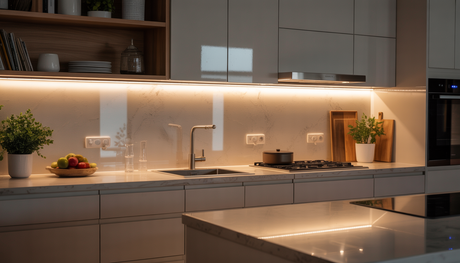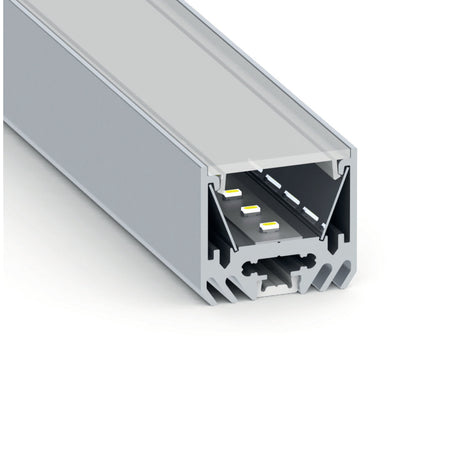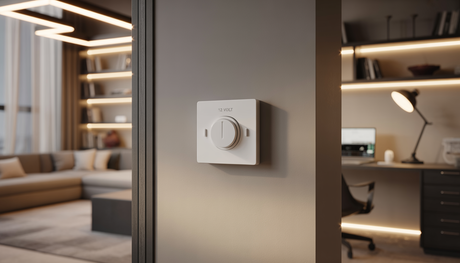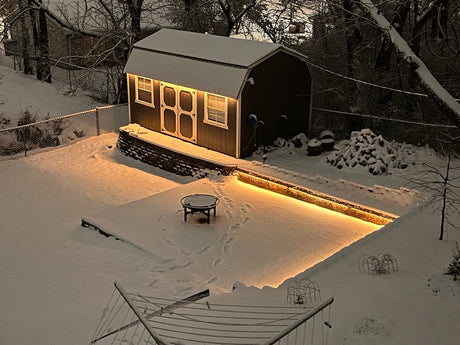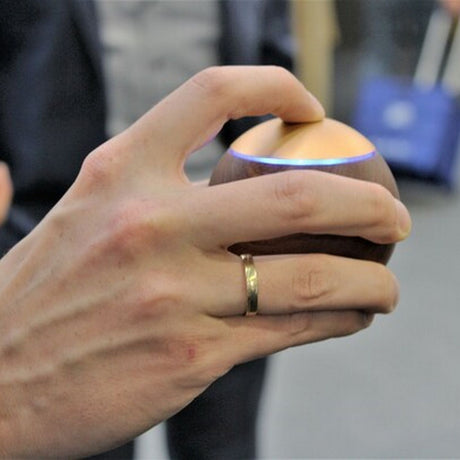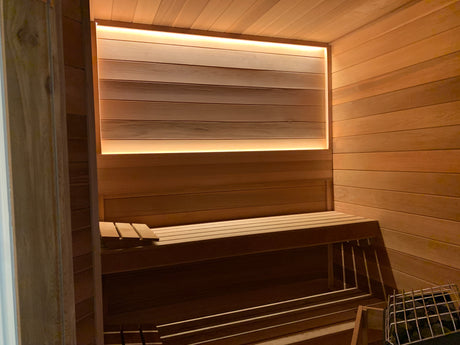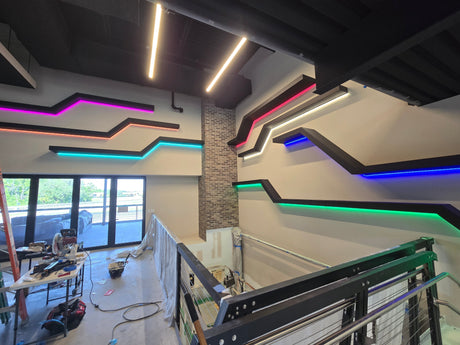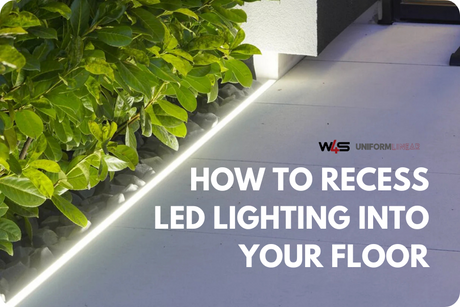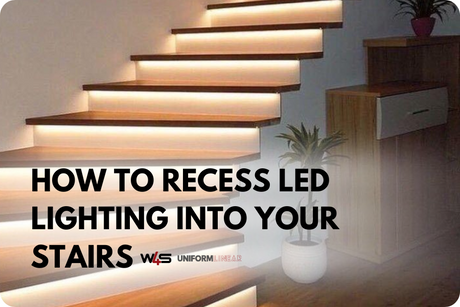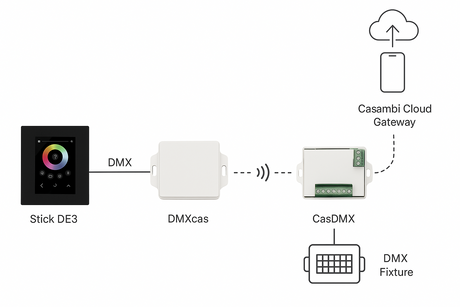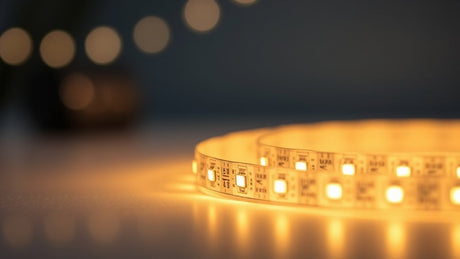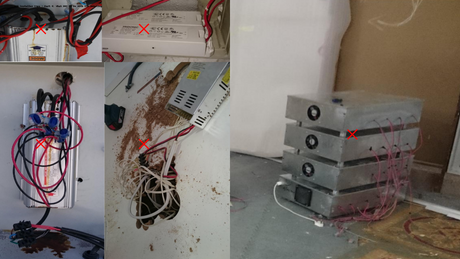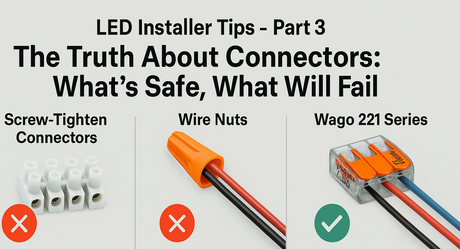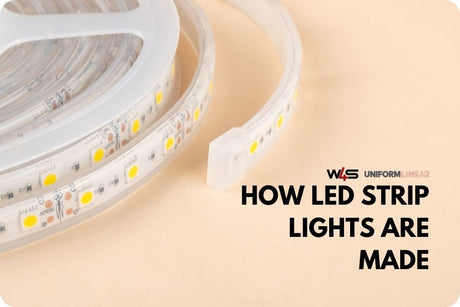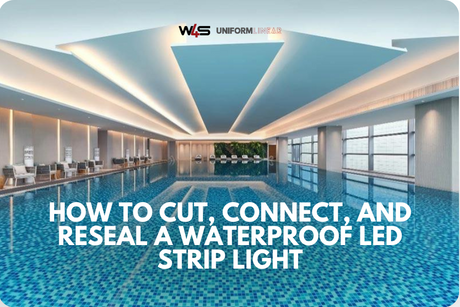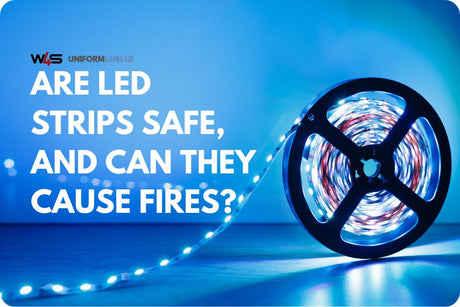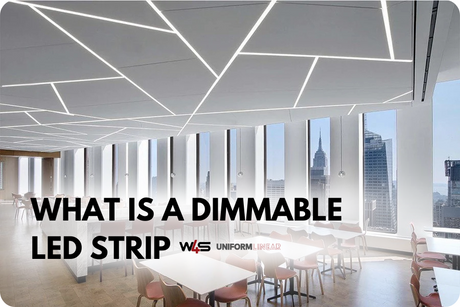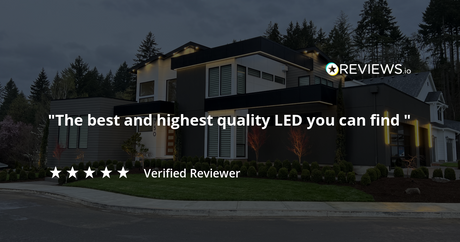LED strip lights are a top choice for their ingenuity, energy efficiency, and sleek appearance. They are an easy way to add light to any space, and you can use them for accent lighting, under-cabinet lights, or commercial areas. While sticking LED strip lights directly onto a surface may seem easy, using an aluminum channel offers important benefits.
Here’s why using an LED channel, also known as channel lights or LED strip extrusion, is essential. It provides a professional-grade and long-lasting lighting installation.
Better Heat Management
Even though LEDs are highly efficient, they still generate heat. Without proper heat dissipation, the LED strip lights can suffer in performance and experience a shortened lifespan. This is where an aluminum channel comes into play, acting as a heat sink that disperses heat away from the LEDs. Using aluminum channels for LED strips allows you to manage heat more effectively, ensuring your lights maintain optimal performance.
If your lights overheat due to poor heat management, they may dim, become less efficient, or fail prematurely. You protect the strips by housing your LED strip lights in aluminum channel tracks and ensure they last longer.
Cleaner, More Professional Appearance

Applying LED strips directly to a surface can result in uneven placement and exposed wiring, giving the installation an unfinished look. Over time, the adhesive may weaken, leading to sagging or loose strips. Installing the strips in aluminum channels secures them and ensures a polished, professional appearance.
Whether you’re working with surface-mounted LED strip lights or opting for more intricate mounting types such as corner-mounted designs, using a channel gives your lighting setup a sleek, finished look. This is especially important in areas where the lights are visible, like under cabinets or along walls in commercial spaces.
Softer, More Even Lighting
One of the common issues with LED strip lights is the visibility of individual diodes, which can create a harsh, dot-like lighting effect.
A simple solution is to use a strip light diffuser. Installing the light in LED channels and diffusers softens and minimizes hotspots, resulting in a more even distribution.
A well-placed LED tape light diffuser eliminates glare and smooths out the light, making it ideal for accent lighting or areas that need softer illumination. If you want to diffuse LED light strips or reduce harsh light, diffusers can help. They create a steady glow, which is great for kitchens, offices, or any space that needs soft lighting.
Protection and Durability

LED strips are delicate and can be easily damaged by dust, moisture, or physical impact. Installing them in an aluminum channel protects the strips from these elements. This protection is especially important in places like kitchens, bathrooms, or workspaces.
An aluminum extrusion acts as a durable housing, protecting the LED strip while ensuring they remain in perfect working condition. Additionally, these channels prevent accidental damage during cleaning or daily activities, extending the lifespan of your lights.
If you don't install your strip with a channel and a diffuser, it may end up looking like this one...

Versatile Mounting Options
LED channels provide a range of mounting types, allowing you to tailor the lighting to your space. For example, a 45-degree LED channel is ideal for corner-mounted installations, directing light at a specific angle. You can use these for under-cabinet lighting, accent lighting, or any situation that requires directional lighting.
Surface-mounted LED strip lights offer another installation option. You can easily secure the lights along ceilings, walls, or floors using aluminum channel tracks, ensuring stability and consistency in your lighting design. These flexible channels make sure your lighting works well in any area, whether it’s for home or business.
Simplified Maintenance and Upgrade

Once you install your LED strip lights within an aluminum channel system, you can easily perform future maintenance. You can remove and replace the strips without damaging the surrounding surface, making upgrades or repairs easy. This feature is particularly beneficial in commercial spaces, where lighting needs might change over time.
The modular nature of LED strip mounting channels means that you can swap out strips as needed without having to redo the entire installation. This makes them an excellent choice for long-term projects, ensuring that your lights remain in high-quality condition.
Conclusion
Using an aluminum channel with LED strip lights is not just about looks. It also makes your lights last longer, helps control heat, and improves how your lighting looks overall. These channels act as protective and aesthetic enhancements that make any LED strip application more durable and professional.
Whether for surface-mounted or corner-mounted installations, a well-chosen LED channel system can elevate your lighting solution. It not only offers heat dissipation and a sleek finish but also simplifies maintenance and ensures a longer lifespan for your lighting setup.
FAQs
Here are the most common questions about this topic:
Can I install LED strip lights without an aluminum channel?
Yes, you can, but doing so exposes the strips to heat, dust, and damage. Over time, this can lead to sagging, dimming, or even failure. Using an aluminum channel protects the lights and it also helps manage heat better and looks more professional.
How do I diffuse LED strip lights effectively?
The best way to diffuse LED strip lights is by using a strip light diffuser within an LED channel. This setup softens the light, eliminates hotspots, and creates an even distribution, making the light more pleasing to the eye and suitable for various lighting applications.
What types of LED channels are available?
Many options for LED channels exist, including surface-mounted, recessed, and corner-mounted types. A 45-degree LED channel is great for corner applications, while surface-mounted channels are perfect for easy installation along walls, ceilings, or floors.





